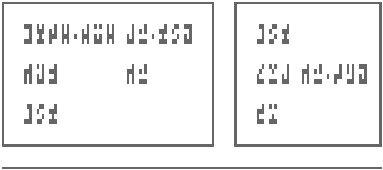|
Etip is the traditional language of Yori. It has a common script but many spoken forms. The earliest extant sources of a language identifiable as Etip go back to about -200. A common way to write spoken language emerged ... a set of phoenetic characters that was shared by a number of different languages. This is called Early Etip though it this stage it was more a system for encoding speech sounds rather than a true language. Between 100 and 200 is when scholars consider Etip to be a true langauge in its own right. Called Middle Etip, it is the language of the A'chim papers and the Yori Law Manuscripts. Etip acted as a linguistic bridge, allowing words to be shared between the different tribes. However, spellings still varied wildly and to read a Middle Etip document often takes extensive cross-referencing to regional dialects of the time. After the year 200, Modern Etip emerged, largely based on Fargoanese. Due to the increasing use of Vilani and Bilanidin the number of Etip users has been declining for some time. However, following the ascension of Zelodeous in Yorian theology (with his traditionalist slant), Etip has seen a strong revival in recent years. It is no longer found just in obscure mountain communities. |
|
There are 23 vowel symbols in Etip, but these actually represent 6 root sounds and some variations: 5 of the root sounds have a long form, there are 7 valid double combinations, and 5 'silent' vowels. The long form of a vowel sounds the same as the short form but it is said for longer, and double vowels are merely 2 short form vowels spoken after each other. In fact most of these vowel sounds and variations are similar to English, but one special vowel can cause problems for non-native speakers: The "h" vowel has a short form that sounds like "ha", no long form, but when added to another short form vowel becomes a near silent exhalation of air ... often requiring the speaker to gasp for breath midway through a sentence!
| |||||||||||||||||||||||||||||||||||||||||||||||||||||||||||||||||||||||||||||||||||||||||||||||||
|
Early Etip has 29 consonants, while modern Etip has 30. (The extra consonant is "hy".) The consonant "h" varies from the vowel "h" in that the consonant sound is made in the back of the mouth (as in "how"), while the vowel sound is made at the front (as is "who"). Consonant symbols can be differentiated from vowel symbols in that consonants are angular while vowels use circles.
Study of the geometric patterns of Etip symbols has suggested some missing characters from before the Zurphani arrival on Yori, but no record of them exists. One was "hy" which was first speculated of, and then entered regular usage in modern Etip. Another is suspected of being "ha":
| ||||||||||||||||||||||||||||||||||||||||||||||||||||||||||||||||||||||||||||||||||||||||||||||||||||||||||||||
|
Etip words are made of 1 to 3 syllables, all of which have the CVC form except where the vowel is silent ... then the final consonant is dropped leaving just CV. |
|
In Etip sentences are organised as blocks. Sentence blocks are arranged left to right, with a ruled line separating lines (two ruled lines without any sentence blocks between indicate a paragraph or subject break). Each sentence block consists of three lines: the action performer, the verb, and the action receiver. Optionally, each of these elements may also have a qualifier to the right of the main element. Finally, elements and qualifiers may have sub-parts: these are arranged in order of descending significance and separated by dots.
Sentence blocks are normally read left to right and top to bottom. However, when only the verb has a qualifier it is more common to read the block top to bottom and then the verb qualifier. Thus the above can be read as "Brown John Police Officer Question Past Suspect. Suspect Knows Past-Negative Crime" ... or as "Brown John Police Officer Question Past Suspect. Suspect Knows Crime Past-Negative". In either case the meaning is the same: "Police Officer John Brown questioned the suspect. The suspect knew nothing about the crime." Of course, Etip doesn't use English letters or words, this is just to illustrate how a sentence is laid out. In the modern standard it is written:
(Note that "John Brown" is not a Yorian name and has to be rendered by phoenetic approximation.) In recent years, in places with strong offworld contact like Geronemo and Market, people have started to use a more Imperio-centric 'sentence line'. The same phrase is thus written:
|
|
Yorians count in base 8 (or octal). As in English digits are arranged in order of descending significance with a dot to denote the decimal point. Two numbers joined by a dash or hyphen indicate "raised to the power" ... except reversed. For example "2-3" means "3 raised to the power 2". A curvy line (or tilde) followed by a number indicates 'n' octal zeros ... for example "300000" can be written as "3~5". Lets combine this: "32~5-2.3" means 2.33200000 (in base 8) ... or 2.375851968 (in base 10). An Etip digit is a long vertical slash with up to 3 cross marks ... So "32~5-2.3" is ... 
|
|





























































